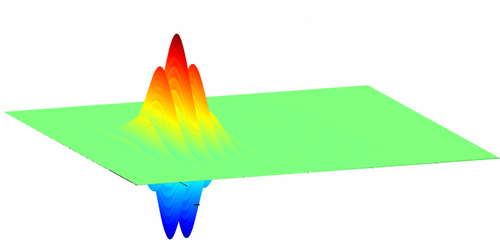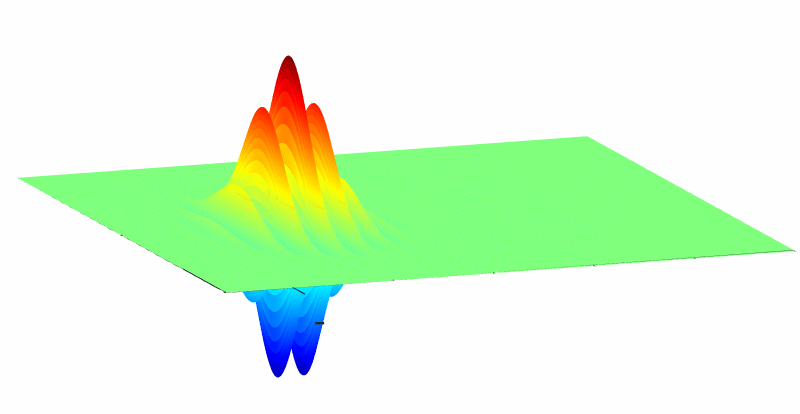Magnetic Fluctuations without a Magnet
Inside a magnet is a highly ordered state of aligned spins. Small disturbances to this order can travel and persist as waves known as magnons, but experiments now show that such waves also exist at temperatures too warm for large-scale magnetic order. The findings indicate that magnons exist in a wider range of conditions than previously known and that they may be amenable to uses in information processing.
In a ferromagnet, the electron spins point in the same direction at extremely low temperatures. At intermediate temperatures, thermal jiggling disrupts this order, creating a semi-organized state that researchers often describe as a collection of small deviations from perfect order (magnons) that can propagate as waves. If heated further, above their Curie temperature ( TC), all ferromagnetic materials eventually lose long-range magnetic order, although islands of order still persist on microscopic scales.
“Physicists have wondered for a long time about what happens to magnons at and above the Curie temperature,” says Khalil Zakeri of the Karlsruhe Institute of Technology in Germany. “Do they still exist as well-defined excitations or not?”
Previous experiments aiming to find out have been inconclusive, he says, in part because high Curie temperatures meant heating materials to temperatures where unrelated structural changes also take place, complicating efforts to detect magnons. But recent calculations suggest that magnons should indeed exist above TC. Now, using a thin film of a ferromagnetic material, which has a much lower TC, Zakeri and colleagues have found strong evidence for well-defined magnons traveling over distances of several nanometers well above TC.
The team experimented with an ultrathin ferromagnetic film consisting of just two atomic layers of alloyed iron and palladium, with a Curie temperature of 380 K. To search for magnons, they hit the sample with a beam of spin-aligned electrons with an energy of 6 eV. In principle, these electrons can excite magnon waves in the material if their spin is antiparallel to that of spins in the sample. Such excitations should show up as missing energy of about 105 meV in the electrons reflected from the surface, corresponding to magnons with frequencies in the terahertz range.
Zakeri and colleagues used this magnon probing technique while heating the sample from 13 K up to 400 K, above the Curie temperature. At 13 K—with the sample spins almost uniformly ordered in one direction—they found a strong magnon signal for incident electrons with spins antiparallel to those of the sample. As temperature increased, incident electrons with this spin generated a weaker signal, and the signal for incident electrons of opposite spin increased, as expected—a sign that the increasing disordered produced an increasing number of reversed spins. Precisely at the Curie temperature of 380 K, electrons of both spins were equally effective in exciting magnons, reflecting the complete loss of long-range spin ordering in the sample.
However, even at 400 K, the incident electron beam still excited coherent magnons. This can be understood, the authors suggest, because even though the sample lacks long-range magnetic order, it still has small islands of local order. Electrons encountering such islands can excite magnons.
According to the team’s results, “the high-frequency, terahertz magnons exist as coherent, propagating quasiparticles even well above the Curie temperature,” says Zakeri. Indeed, well above TC, they found that the magnons grew weaker while traveling, but still propagated nearly 3 nanometers before almost completely disappearing. The team determined these magnon properties by analyzing the energy spectrum of scattered electrons.
“This is really nice, very elegant experimental work,” says condensed matter theorist Julie Staunton of the University of Warwick in the UK. “It confirms quite clearly that there are collective electron spin effects in a magnetic metal above the Curie temperature.”
The new experiments, Zakeri says, were motivated in part by the hope that high-frequency magnons of this kind might be useful for information processing with so-called spintronics, devices that exploit the electron’s spin in addition to its charge. Magnons might be used to transfer information quickly between such spins, and high-frequency magnons would be the most useful kind because they travel faster than lower frequency ones.
This research is published in Physical Review Letters.
–Mark Buchanan
Mark Buchanan is a freelance science writer who splits his time between Abergavenny, UK, and Notre Dame de Courson, France.





